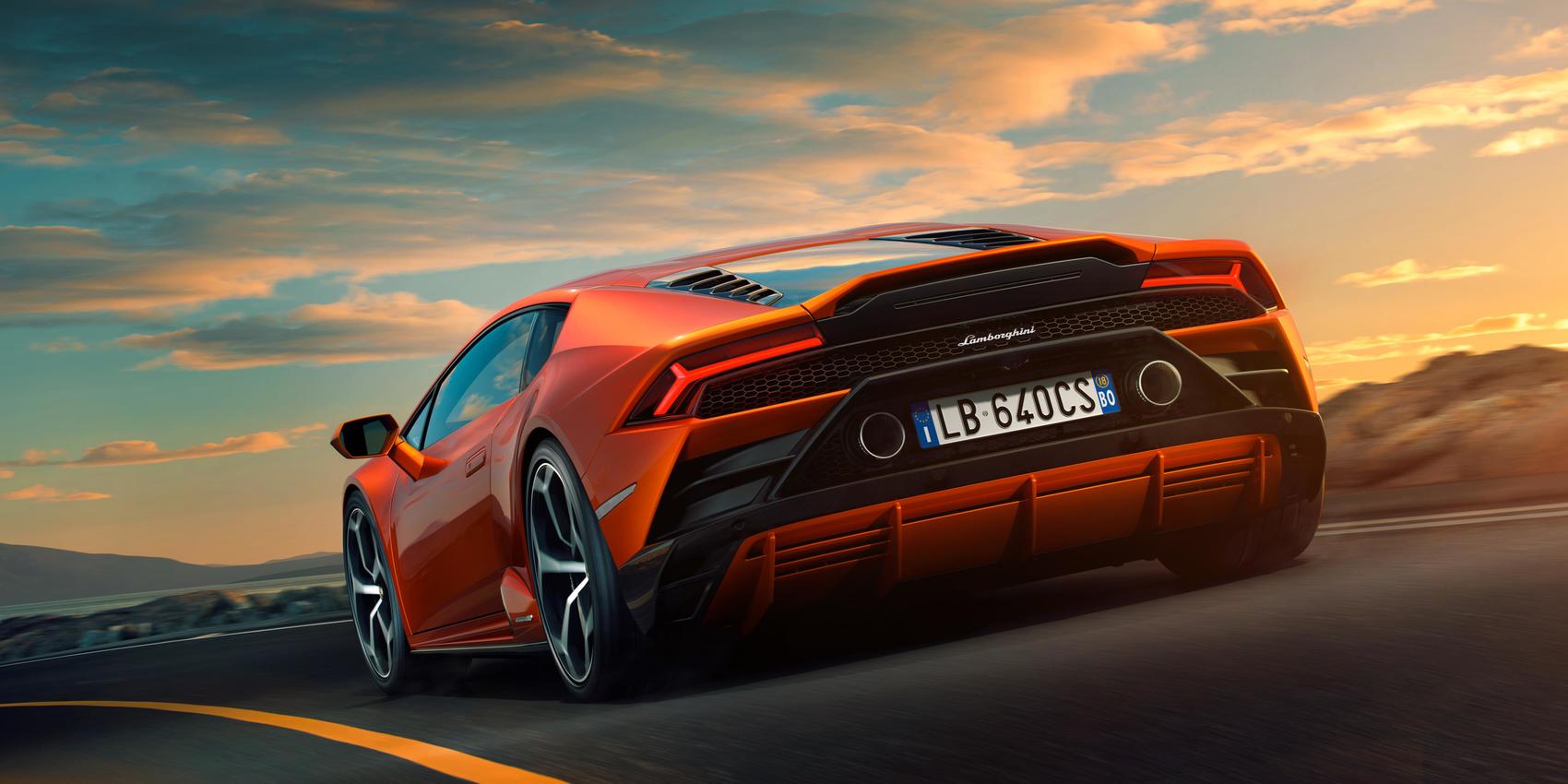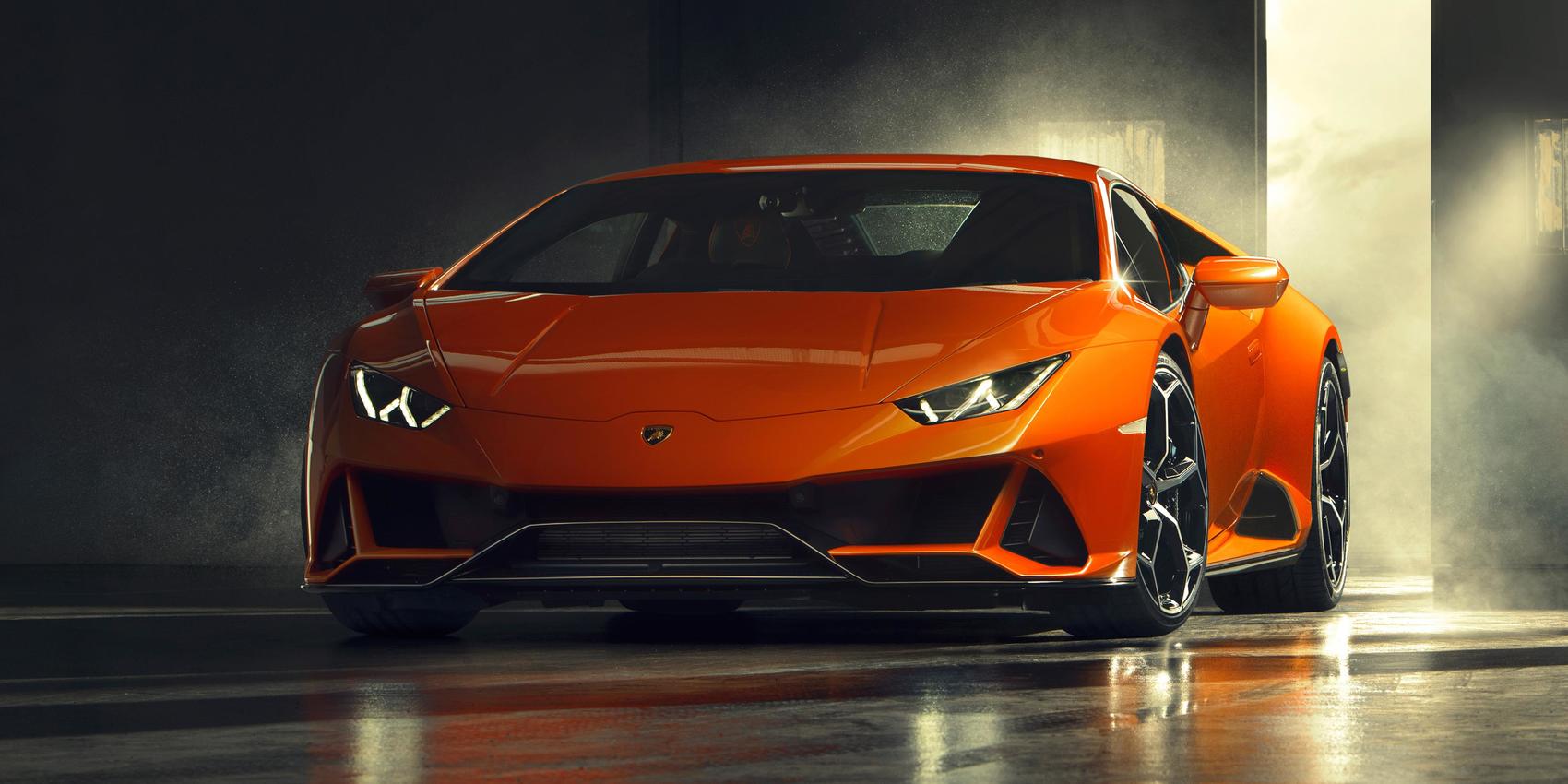- The Lamborghini Huracán EVO is a noticeable improvement over the prior generation.
- A dynamic control system optimizes performance and handling be it on the street or track.
- Lamborghini goes a little overboard describing the car at times, like dating profile overboard.
Lamborghini, finally, is not content to leave well enough alone. The Sant’Agata Bolognese company has a habit of realizing the shortcomings of a given model; then just junking that model entirely and replacing it with a whole new one. Lambo seems to have put that behind them with the new Huracán EVO, a car that corrects and improves upon the original Huracán.
Just Breathe (Normally)
The engine of the EVO, arguably the most important part of any Lamborghini, is the same basic V10 from before, just uprated and tweaked here and there. I think this is the same plant the Italians got from the Audi R8 when the Germans bought Lambo. Everybody agreed that was a good move (both the engine and getting bought by Germans).
And the virtuousness of that shows in what this mill brings to the party.
We’re talking about a 5.2-liter naturally-aspirated V10 with higher power output, titanium intake valves, and a lightweight exhaust system. The Lamborghini Huracán EVO cranks out 640 horsepower and 443 lb-ft. of torque. Since the Huracán EVO tips the scales at a not all that bad 3,100 lbs, it can hit 62 mph in just 2.9 seconds and 124 mph in nine seconds. It tops out at 202 mph. Nice!
It can stop too (thankfully), hauling itself down from 62 mph to zero in just 105 feet. However, the Huracán EVO’s performance evolution is evident outside the engine and braking departments.
Digital Underground: On The 1s & 2s (And Zeros)
It’s found in the electrical signals and those little 1s and 0s, bouncing back as they make their residence in the LDVI controller. That’s short for Lamborghini Dinamica Veicolo Integrata! And what that mouthful of spaghetti does is control everything in the go/stop/turn department the way a conductor leads an orchestra.
The LDVI handles the rear-wheel steering and torque vectoring system, effectively working at all four wheels. LDVI controls a sub-suite of accelerometers and gyroscopic sensors – the Lamborghini Piattaforma Inerziale (LPI) – located at the car’s center of gravity. LPI monitors lateral, longitudinal, and vertical accelerations, along with roll, pitch, and yaw in real-time. The LPI system feeds data to the LDVI, tweaking the magneto-rheological suspension to immediately adjust the damping.
Driver Controls: Different Animal In Each One
Naturally, there are new traction control parameters working in concert with the all-wheel drive and torque vectoring systems. Yes, even the steering is part of this zuppa di alfabeto. Lamborghini’s “Dynamic Steering,” for example, provides better responsiveness in the corners, according to the automaker. The technology is coupled with the rear-wheel steering for greater stability during high-speed cornering and braking.
Each of these systems is driver-operated via the ANIMA controller in one of three modes: STRADA, SPORT or CORSA. Think of it as Lambo’s version of Ferrari’s Manettino system. STRADA, or Street, aims for capable yet agile enjoyment. SPORT becomes “playful, intuitive, and extremely exciting,” according to the automaker. This sounds less like the Huracán EVO and more like Lamborghini’s bio on their Tinder profile.
Naturally CORSA, Track, is much sharper and reactive for racing.
Related: Open-air emotion: Meet the Huracán Performante Spyder.
Performance Barbershop
The Lamborghini Huracán EVO also gets an aero haircut; some trimming here and there, kicks and flips, and other bits and bobs. There’s a new front bumper and splitter with an integrated wing. The air intakes are enlarged too while a slotted spoiler enhances air flow. Lambo has also gone over the EVO’s underbody, reshaping it to improve aerodynamic efficiency more than five times over the first gen Huracán.
And, since you want everybody to know you’re driving the new Huracán EVO, there’s some styling cues to set you apart. The “show model” is presented in Arancio Xanto, a new four-layer color most likely coming for production cars. You will also find new 20-inch Aesir rims wrapped in Pirelli P Zero tires. The interior trim features an Alcantara and leather mix, with Arancio Dryope styling details that match the body tone and ambient lights.
Lamborghini’s patented Carbon Skin is available on request.
This sounds less like the Huracán EVO and more like @Lamborghini's bio on their Tinder profile.
Click To Tweet
Must. Have. Connectivity.
As much as I’d like all cars, especially ones from Lamborghini, to simply be about The Pure Driving Experience, I understand it’s 2019. Connectivity is a thing everybody expects these days. Besides, if it works right, why not be able to find your way to the next available greasy spoon for a good-bad breakfast after an early morning of carving it up?
The Huracán EVO has an 8.4-inch HMI touchscreen above the start button, with voice and gesture control. The touchscreen seems to contorl everything: seats, navigation, status of the LDVI system, and infotainment things like Apple CarPlay.
Pricing & Availability
The Lamborghini Huracán EVO arrives this spring. It should cost you around $261,274 which, yes, is a lot of green. But that’s also right where Lambos always are; a little less than a Ferrari and a little more than a Porsche.
Tony Borroz has spent his entire life racing antique and sports cars. He is the author of Bricks & Bones: The Endearing Legacy and Nitty-Gritty Phenomenon of The Indy 500, available in paperback or Kindle format. Follow his work on Twitter: @TonyBorroz.
Photos & Source: Automobili Lamborghini.
https://www.automoblog.net/2019/01/09/lamborghini-huracan-evo/



No comments:
Post a Comment